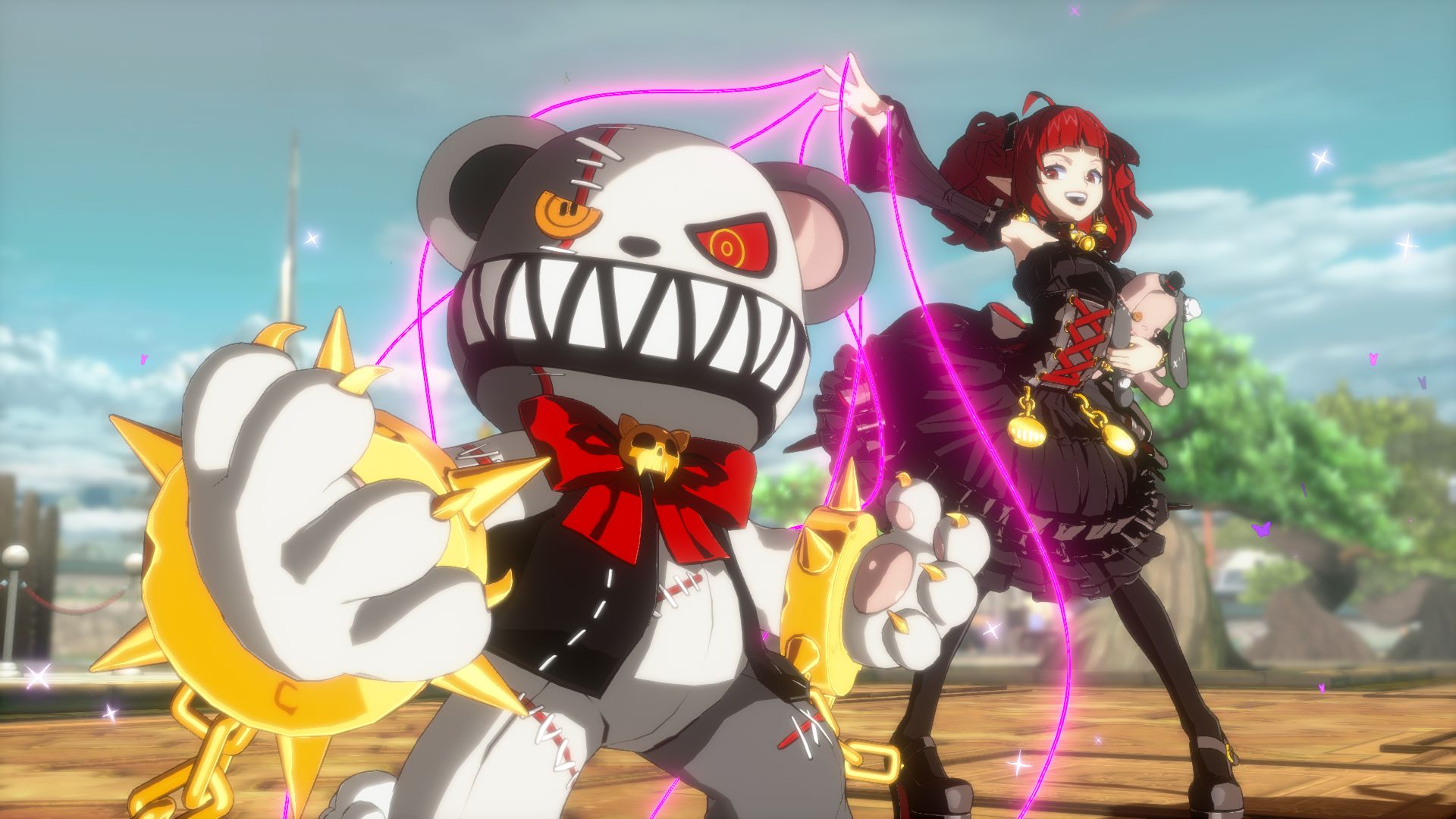Our Verdict
Deep and unique enough for genre veterans, yet also simple and welcoming enough for newcomers.
PC Gamer's got your back
What is it? A beat ‘em up that forces style and substance to make friends.
Expect to pay $50/£41
Released June 28, 2022
Developer Arc System Works, Eighting Co, Neople
Publisher Neople, Nexon
Reviewed on GeForce GTX 1650, AMD Ryzen 5 3550H, 8 GB RAM
Multiplayer? Yes
Link Official site
A shirtless, phenomenally ripped man with spiky hair and a sword the size of a fridge-freezer, and a woman who pulls out a bazooka for one of her weakest attacks? Yup, this is another anime-styled beat ‘em up to hurl onto the pile. That said, you’ll want to hang onto this one. The glorious excesses of the character design and attack animations are here to decorate, not distract.
Although it’s based on the MMO Dungeon Fighter Online, you don’t need to know anything about that for this (and not just because BlazBlue and Guilty Gear have already taught Arc System Works fans to expect largely impenetrable storytelling). What you do need to know is that DNF Duel is surprising in some very positive ways… starting with how it handles character damage.
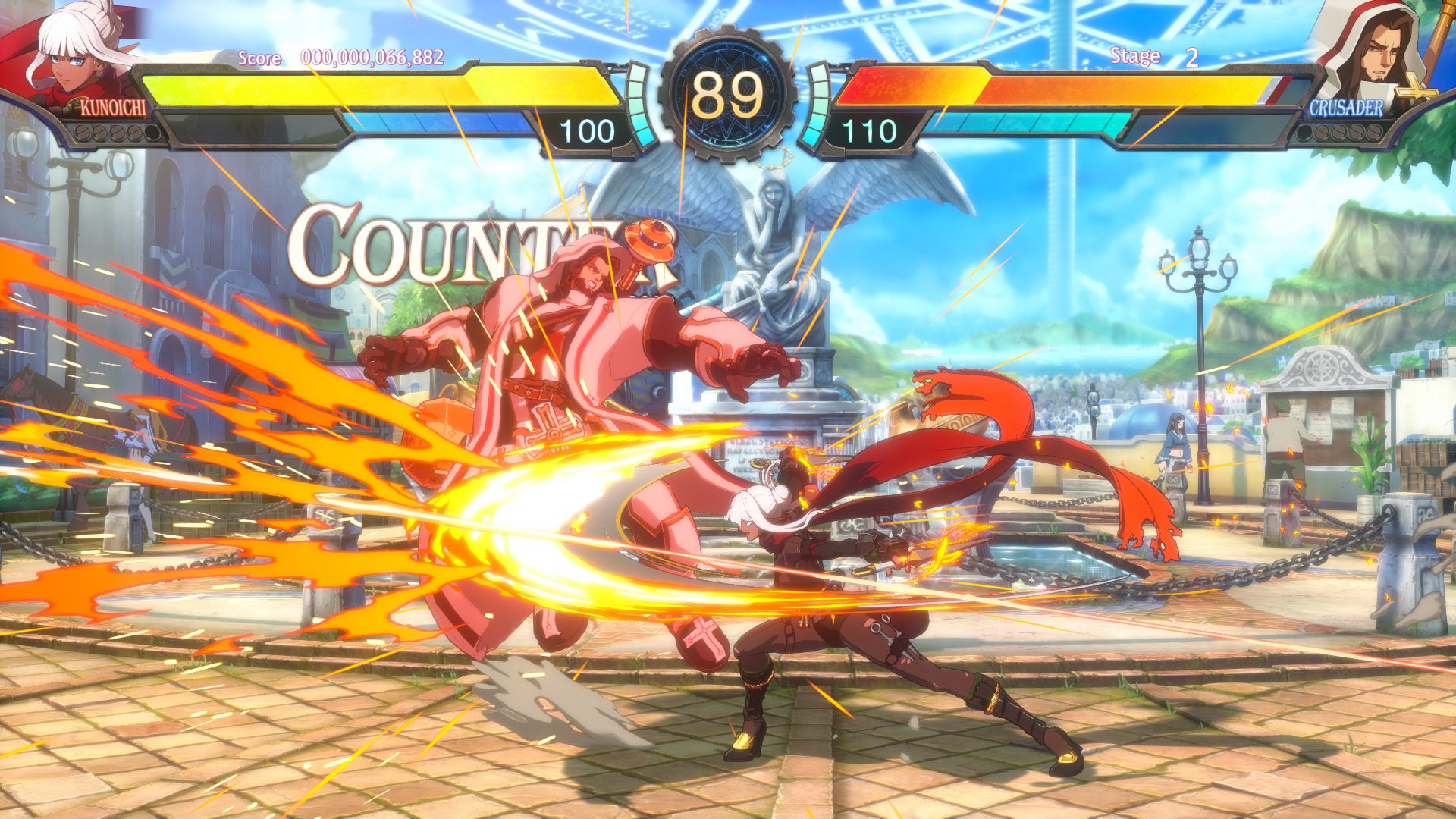
There are two types of damage; red damage, and white damage. Red works the way you’d expect, i.e. it’s a portion of the health bar that is gone immediately and permanently. White, on the other hand, will slowly regenerate if you can let it. Most attacks result in a chunk of white damage, and a little red.
Each character has special attacks that require a chunk of their slowly-regenerating MP gauge to activate. These MP attacks, if not blocked, deal nothing but red damage–and instantly convert any white damage your opponent is carrying to red. I’ll come back to MP attacks, but what should already be clear is that using weaker attacks to ‘bank’ white damage on your opponent’s health bar to obliterate later is a valid, and often important, tactic.
Fundamentally, that’s as complicated as the game gets—or, more accurately, DNF Duel goes out of its way to provide explanations to those who might need them. There’s plenty in the systems that can and will only be fully exploited at high-level play, but this is incredibly welcoming to genre newcomers. This is partly due to the tutorial mode. The command list will not only tell you how to perform each move, with a brief clip, it will even give you hints about how to use the move offensively or defensively. It’ll tell you for example if a move is good for defending against aerial attacks, for finishing a combo, or if and how it could leave you vulnerable.
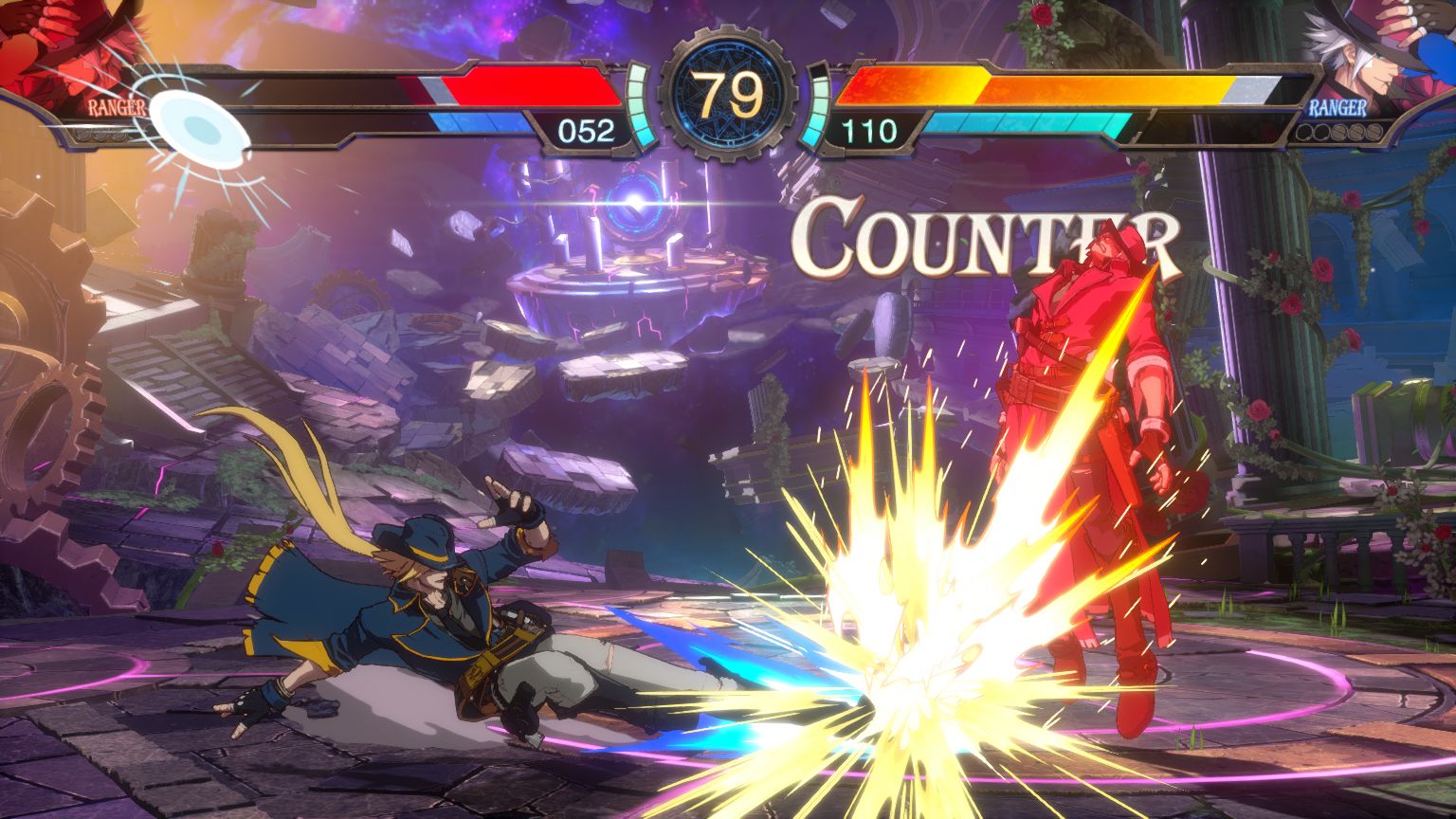
Surprisingly perhaps, there’s no auto-combo option. You know, where if you hammer one button repeatedly like an angry chimpanzee you can trigger a smooth set of devastating moves? Not an option here. It’s not needed. There’s a wonderful simplicity to the controls; every attack is triggered with either just one button press, or one button press in conjunction with holding a single direction (although a few have options for slightly more complicated inputs if you prefer).
Hit me baby
Yes, this means that button-bashers have the full range of attacks at their grubby fingertips—including many that reach mostly or fully across the length of the screen—but skill will always win out. Everything except throws can be blocked. Everybody has a forward dodge that can harmlessly pass through anything. A mistimed attack will leave an opponent completely vulnerable for a split second, and that’s all you need to deal some serious damage.
There’s a wonderful simplicity to the controls; every attack is triggered with either just one button press, or one button press in conjunction with holding a single direction.
It’s a four-button fighter at heart. Two buttons are for regular attacks, very weak, but the fastest in your arsenal and great for starting combos. Another is for your special attacks. These are more powerful, and can be used without restriction, but never threaten to unbalance the game. Ghostblade for example has a special technique where he teleports through his opponent multiple times, slashing them with his sword on each pass. If the first hit is blocked, though, it’s very easy to punish him for trying.
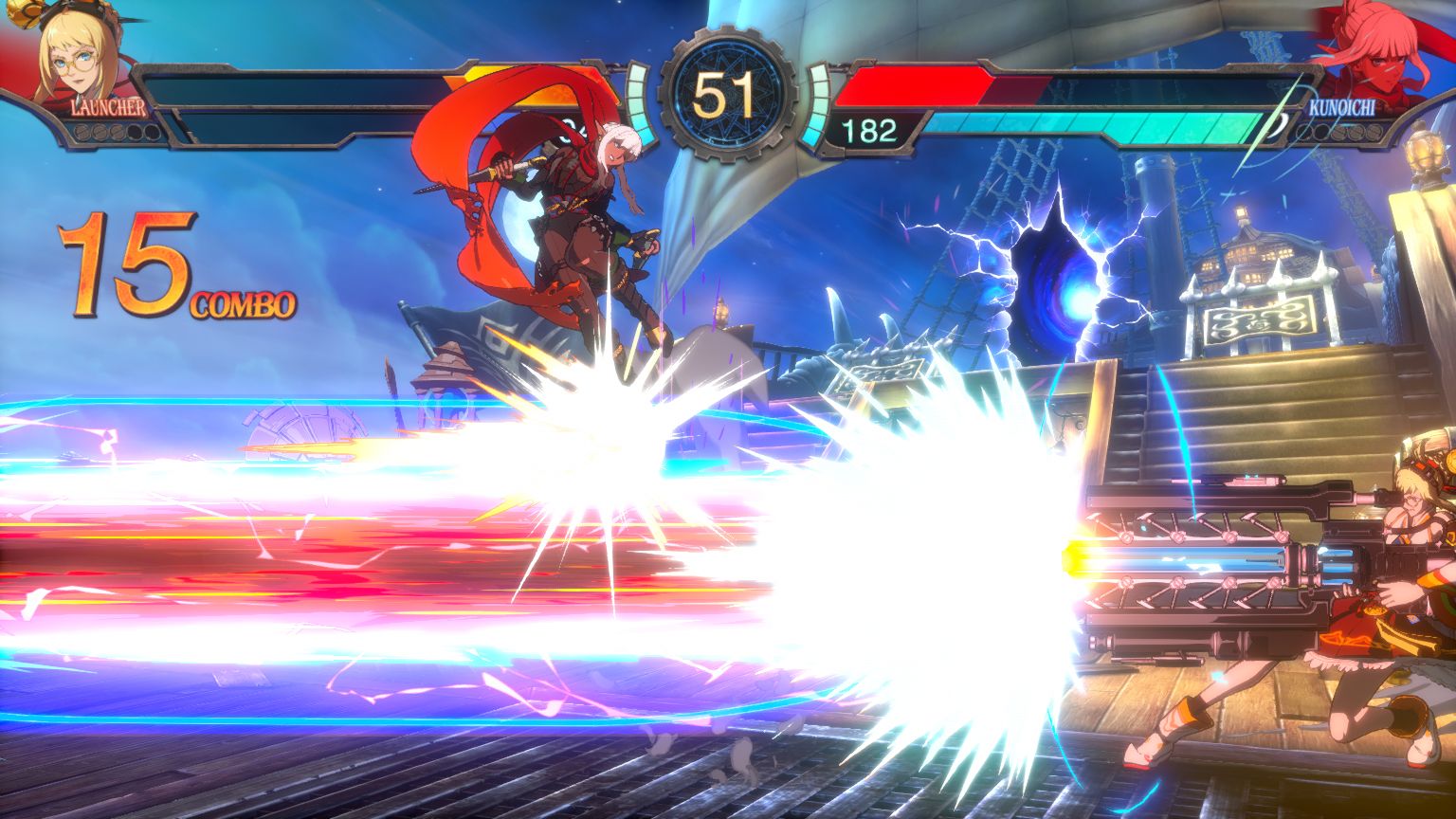
It’s really the MP attacks, and their relation to the red/white damage system, that will cut a clear line between the good players and the great players, and where the slightly more complex elements of the game branch out from. You start out with 100 MP, the maximum increasing as you take more and more damage. MP move costs mean that, initially, you can rarely perform more than a few in a row before exhausting the gauge. This stops people spamming them. You can perform an MP move that costs more MP than you have left, but your gauge will then remain empty until the excess MP has finished regenerating in the background.
DNF Duel’s risk and reward mechanic is called Conversion. With a tap of a button, you can turn all of the white damage you’re carrying into red, in exchange for an MP boost. The more of your health bar you sacrifice, the more MP you’re rewarded with. In this way, you can extend a combo or make a surprise MP gauge recovery by edging yourself closer to death. It’s a very simple yet potentially match-flipping mechanic.
It’s things like this that give the game depth and a tactical layer—one just as visible to casual players as to those who make spreadsheets about hitboxes and invincibility frames. That’s not to say that newbies will stand much chance against genre veterans, but if they want to put the time in to learn how to stand a chance, it’s easy for them to do so.

The concept of characters being Awakened—that is, entering an empowered state when they’re on their last chunk of health bar—is a familiar one to anime fighting fans. As with so much, DNF Duel handles things a little differently. The Awakened state triggers automatically when close to death, and with it, each character enjoys a unique buff. Striker gets a damage boost for example, while Berserker heals slightly with each successful attack. It also grants access to your character’s super-powerful Awakening attack. This move can miss or be guarded against just like any other, however; and using it eliminates your buff, whether the attack was successful or not.
Buff stop
DNF Duel isn’t more complicated or deeper than other beat ‘em ups. It’s deep in a different way, and what that means, in part, is that it’s deep in a way that is easy to explore and understand for people of all skill levels. I’m not interested in gatekeeping, just good game design, and the latter has been spread all over the place here like blood and teeth at the end of a particularly intense fight.
It’s deep in a way that is easy to explore and understand for people of all skill levels.
There are 15 characters, plus one unlockable boss, just like the good old days. That might not seem like much when the average Naruto game tends to give you enough playable characters to populate a small town, but it means that each fighter looks and feels unique. The simple nature of the controls means that it’s quick and easy to become comfortable with a new character, but you’ll need to spend significant time with each in order to truly learn them.
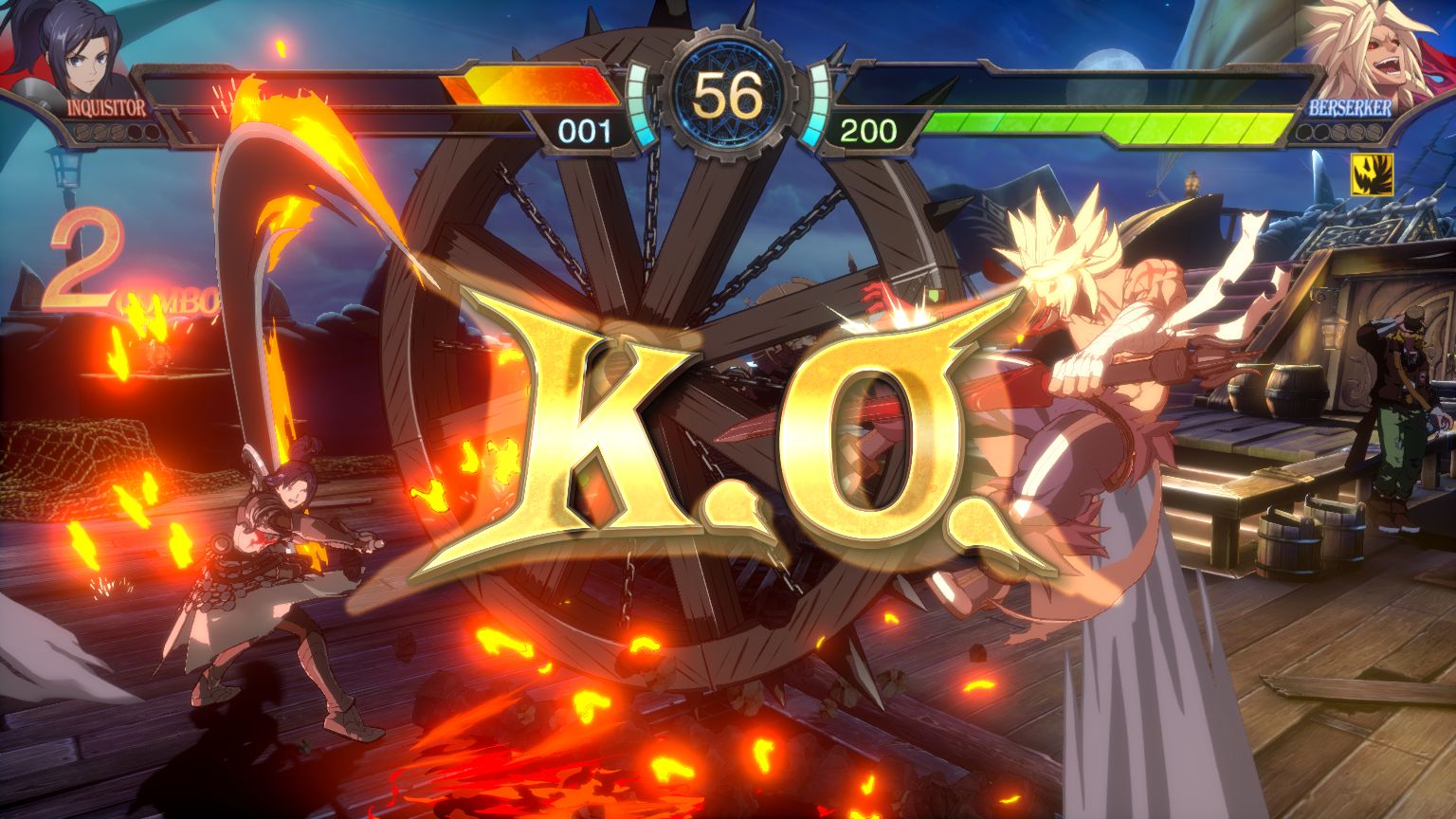
The closest character to being overpowered is Lost Warrior (the boss of course), who has three attacks that can hit from any distance, two of which are MP attacks. All can be blocked though, and one can’t hit an opponent in the air. Similarly, Inquisitor’s gigantic wheel of fiery death can be incredibly annoying to get caught on—but it can be blocked or dodged. Learn what each character is capable of, stay calm, and you’ve always got a chance of coming out on top.
Beat ‘em ups truly come alive online and, despite some launch week woes that have resulted in rare but annoying disconnections, that’s no less true for DNF Duel. Make sure you put in the hours offline to prepare, and you’ll be in for an incredible time.
There are three types of players. The majority play a balanced game, feeling their way around the systems to work out how and when to best attack and defend. A small number however have discovered a character (usually Ghostblade) or combo that they can, and will, cheese ruthlessly. Finally, an even smaller number of players have somehow already mastered the game, and will start tossing you around in the air like juggling balls made of pain within seconds.
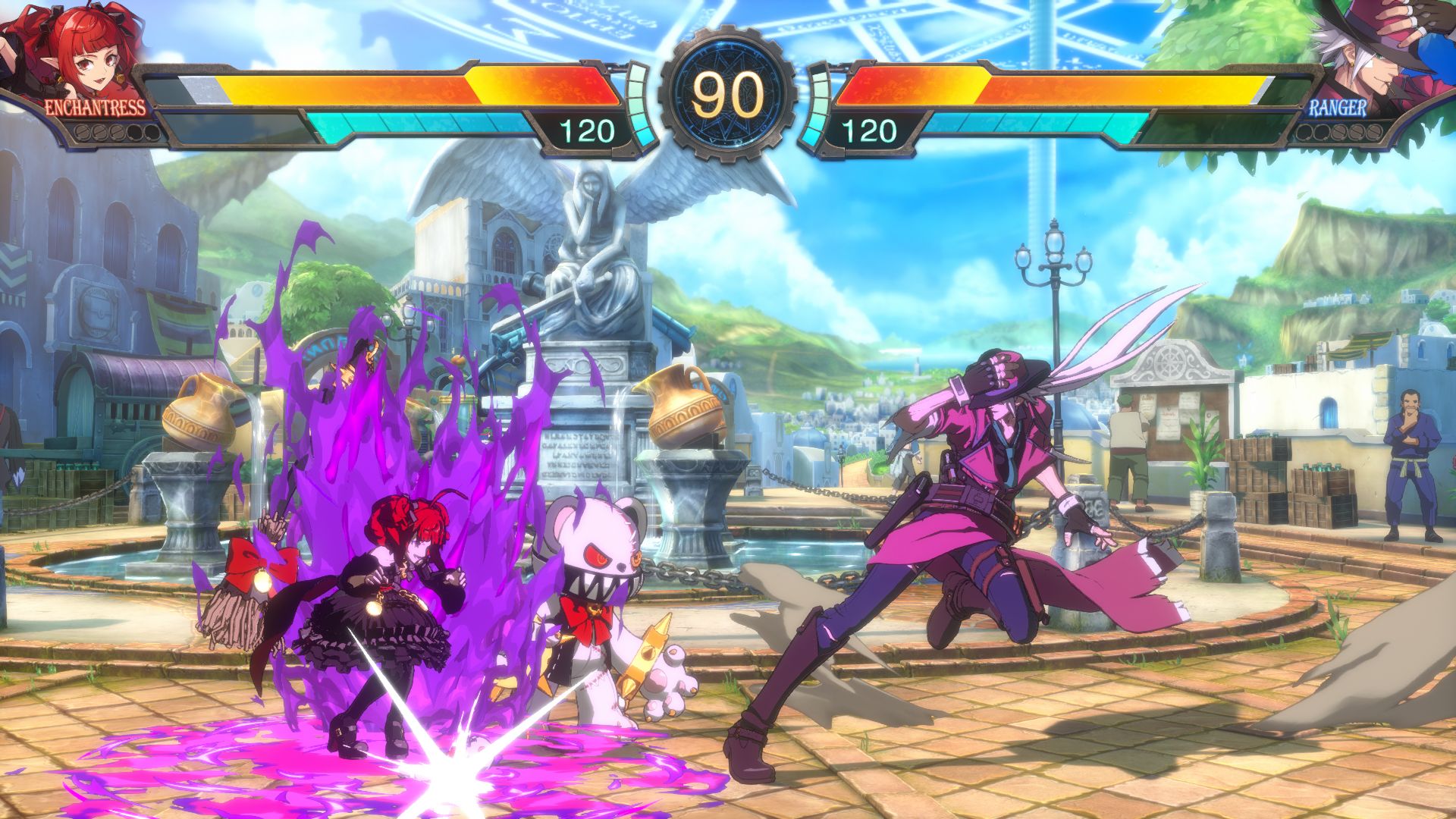
This is par for the course for pretty much any beat ‘em up, but the beauty of this one is that, if you pay attention, you’ll (almost) always have a chance against the cheesiest or, to a lesser extent, most skilled of opponents. Sacrificing all of your MP at the beginning of a match for a Guard Cancel, for example, is an excellent way to send a cheeser flying before you counterattack; and a perfectly timed dodge can give you an opening against even the most fearsome opponent.
The more time you spend learning characters and their moves, the more glorious online matches become. Keeping an eye on your opponent’s MP gauge will let you know what they are and aren’t capable of at any given moment, and knowing the reach of each Awakened move can make all the difference between a win and a loss. This is all easy and pleasurable to learn, because each character is just so damn fun to play as.
There’s no shortage of players, and certainly no shortage of joy when you win a close match (or indeed, fury when you lose one that you got demolished in). This is a game that feels as good as it looks, and that’s saying something.
Deep and unique enough for genre veterans, yet also simple and welcoming enough for newcomers.
